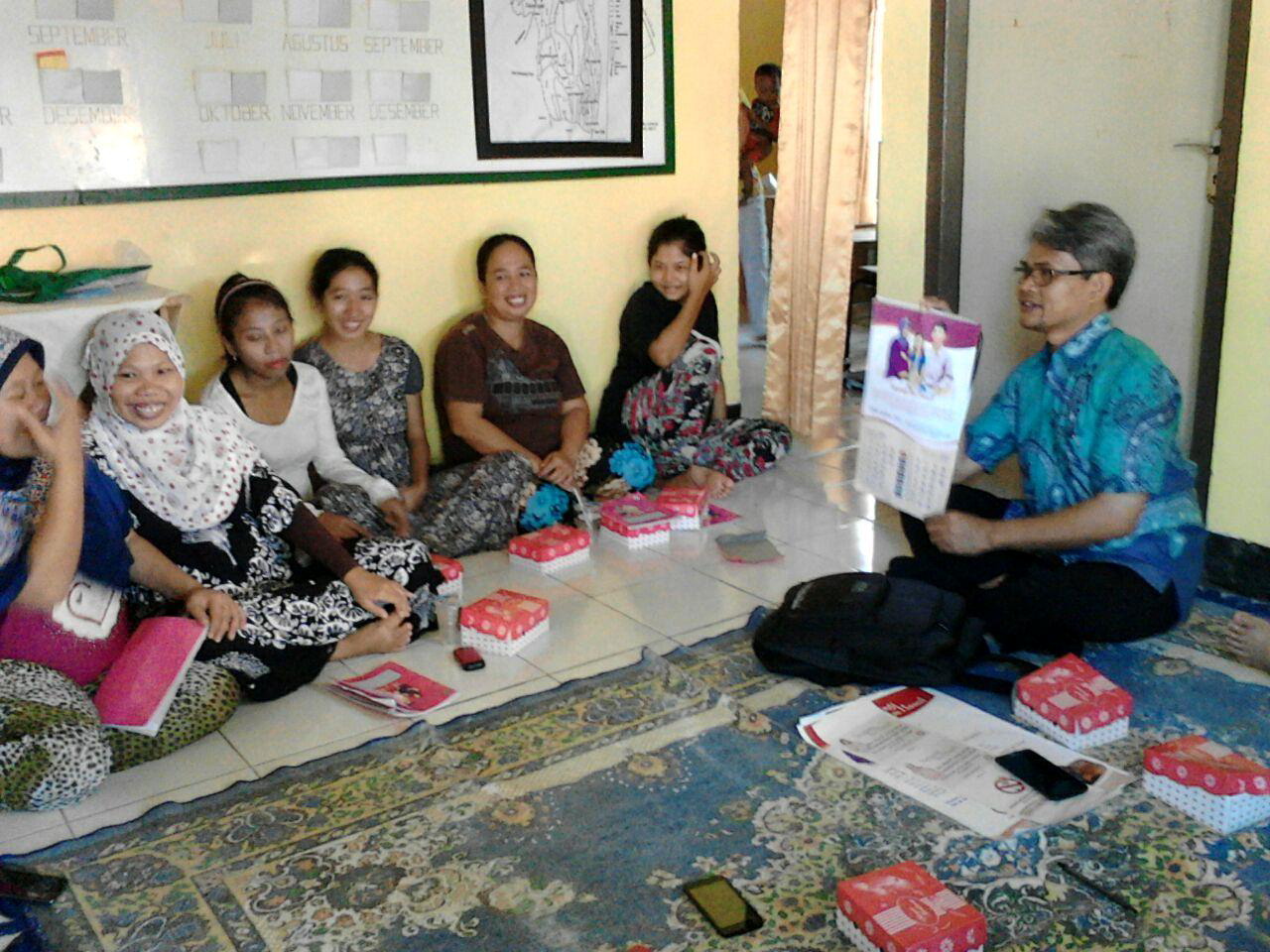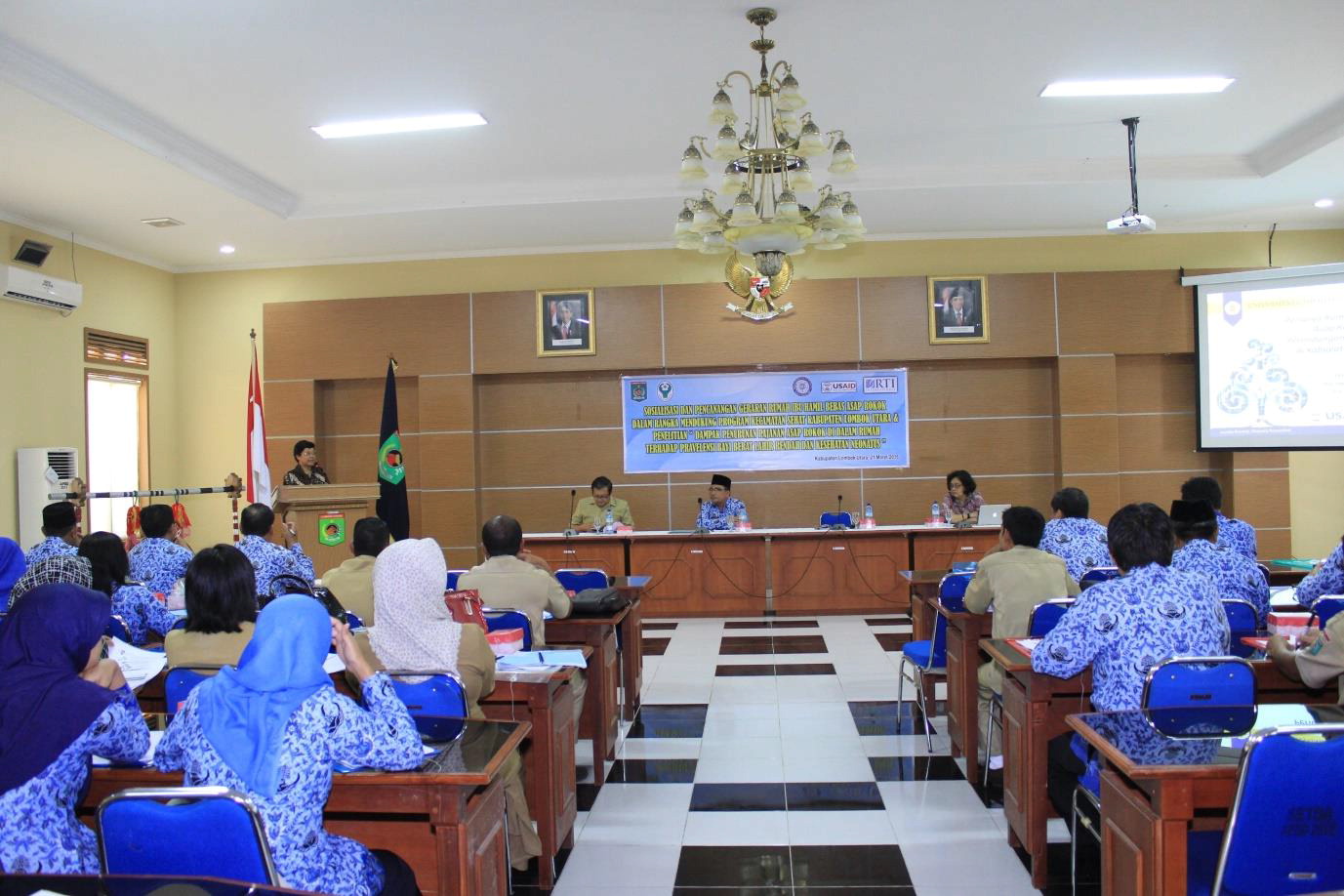|
Impact of reduced in-home secondhand smoke exposure on low birthweight prevalence and neonate health
PI: Yayi Suryo Prabandari, Center for Health Policy and Management, Faculty of Medicine, Gadjah Mada University
USG-Supported Partner: Donald Bailey, Research Triangle Institute (RTI) International
Project dates: February 2015- May 2019
Project Overview:
Indonesia has made strides towards improving many public health and development indicators, but the rates of low birth weight (LBW) births, neonatal morbidity, and mortality remain higher than other countries in the region. International evidence has clearly implicated secondhand smoke (SHS) exposure as a primary preventable risk factor for LBW and neonatal morbidity; indeed, the evidence has been deemed sufficient to implicate SHS exposure as an independent cause of LBW. While smoking rates among women in Indonesia are relatively low, the percentage of men who smoke is among the highest in the world, and a majority of these males smoke within the home. Efforts to reduce LBW births and improve neonatal health must address male smoking in the home. The proposed study, the first of its kind in Indonesia, aims to demonstrate the potential impact of an innovative, multi-component intervention designed to impact pregnant women who live in households where a male smokes. Community and household intervention will directly target male smokers. Specifically, we propose a quasi-experimental, intervention/control study in two geographically distinct but demographically similar areas. The intervention area will receive three separate but interrelated intervention components: a Smoke-Free Home media campaign aimed at educating the broad public about the dangers of SHS during pregnancy and the benefits to child health by restricting smoking in homes; Smoke-Free Home community promotion leading to a community-level declaration of commitment to Smoke-Free Homes; and Smoke-Free Home family education leading to household-level Smoke-Free Home contracts. Results of this study will demonstrate the potential impact of this intervention to reduce SHS exposure in the home, reduce rates of LBW births, and improve neonatal health outcomes. If effective, the intervention could be efficiently scaled up throughout Indonesia with the potential to significantly improve neonatal health outcomes.  |  | Media testing. (photo courtesy of PI Yayi Suryo Prabandari)
| Study socialization and introduction at the district level. (photo courtesy of PI Yayi Suryo Prabandari) |
Final Summary of Project Activities
The PEER project was completed in May 2019. The researchers found some important results even though the study sites experienced severe flooding in December 2016 which displaced the study population and made it a challenging environment to conduct the research.
The study found that pregnant mothers in North Lombok living with household members who smoked more than 5 cigarettes per day at home in the first trimester are 1.29 times more likely to give birth to low birth weight (LBW) infants, adjusted for LBW history and maternal body mass index (BMI) before pregnancy. The researchers also found other factors associated with the risk of LBW. Primiparous women are 2.19 times more likely to give birth to LBW infants compared to women who have no history of LBW in the previous pregnancies. Women with a history of LBW are 3.92 times more likely to give birth to LBW infants than those without. LBW is associated with maternal BMI before pregnancy. Mothers who were malnourished before pregnancy (BMI <18.5 kg/m2) were 1.97 more likely to give birth to LBW infants. The team calculated scores for in-home SHS exposure which range from 0-16. A greater score indicates a greater exposure from in-home SHS. The study found a decrease in in-home SHS exposure both in the intervention area (North Lombok) and control (Bima). However, the score for SHS exposure in Bima remained higher than North Lombok at postnatal. The differences are significant at baseline, 6 months, and delivery. The average infant birth weight in Bima (3100 gram) is slightly higher than in North Lombok (3026 gram). The difference is not statistically significant and both still fall within the normal range (2500-4000 gram). The percentage of LBW decreased in Bima (8.23%) and North Lombok (7.42%); however, the decrease was not found statistically significant. The percentage of neonates with signs of illness was higher in Bima. There are significantly higher percentages of neonates experiencing respiratory distress (5.82%) and diarrhea (6.19%) in Bima compared to North Lombok (4.04% and 3.36%, respectively).
Through the project, one village community agreed to declare their village as a “Smoke-Free Home for Pregnant Women” village. The project team also had 80% of their participants (1334 people) sign onto a community declaration of a Smoke-Free Home. Health promotion media was created by the PEER project team to assist with communicating the importance of a smoke-free home and aimed to persuade smokers not to smoke around women and children. The promotion media consisted of stickers, leaflets, and calendars. Some leaflets are also distributed in posyandu during antenatal care. The researchers recommended that pregnant mothers and husbands need to be continually educated regarding harmful effects of SHS exposure on pregnancy and neonatal health, as well as other relevant information regarding child development.
The research results were disseminated to the local level as well as policy makers at public health offices.
Publications
Anhar, V. Y., Padmawati, R. S., & Prabandari, Y. S. (n.d.). Asertivitas ibu hamil terhadap perilaku merokok suami. Berita Kedokteran Masyarakat, 34(10).
Padmawati, R. S., Prabandari, Y., & Malik, S. (2018). Challenges in developing a smokefree home initiative in Lombok Utara, Nusa Tenggara Barat. ICTOH-TCSC. Surabaya. Indonesia. http://ictoh-tcscindonesia.com/wp-content/uploads/2019/01/Proceeding-Book-5th-Final-include-cover.pdf
Prabandari, Y., Padmawati, R. S., Cranshaw, E., & Mellen, R. C. (2018). What factors contribute on the participation of Smoke Free Home Movement in Lombok Utara, Nusa Tenggara Barat? ICTOH-TCSC. Surabaya. Indonesia. http://ictoh-tcscindonesia.com/wp-content/uploads/2019/01/Proceeding-Book-5th-Final-include-cover.pdf
Prabandari, Y., Padmawati, R. S., & Suryo Bintoro, B. (2018). Multilevel intervention in reducing in-home secondhand smoke exposure among pregnant woman in North Lombok district, Indonesia. Tobacco Induced Diseases, 16(1), 709. https://doi.org/10.18332/tid/84590
PEER Health Cycle 2 Recipients
|





